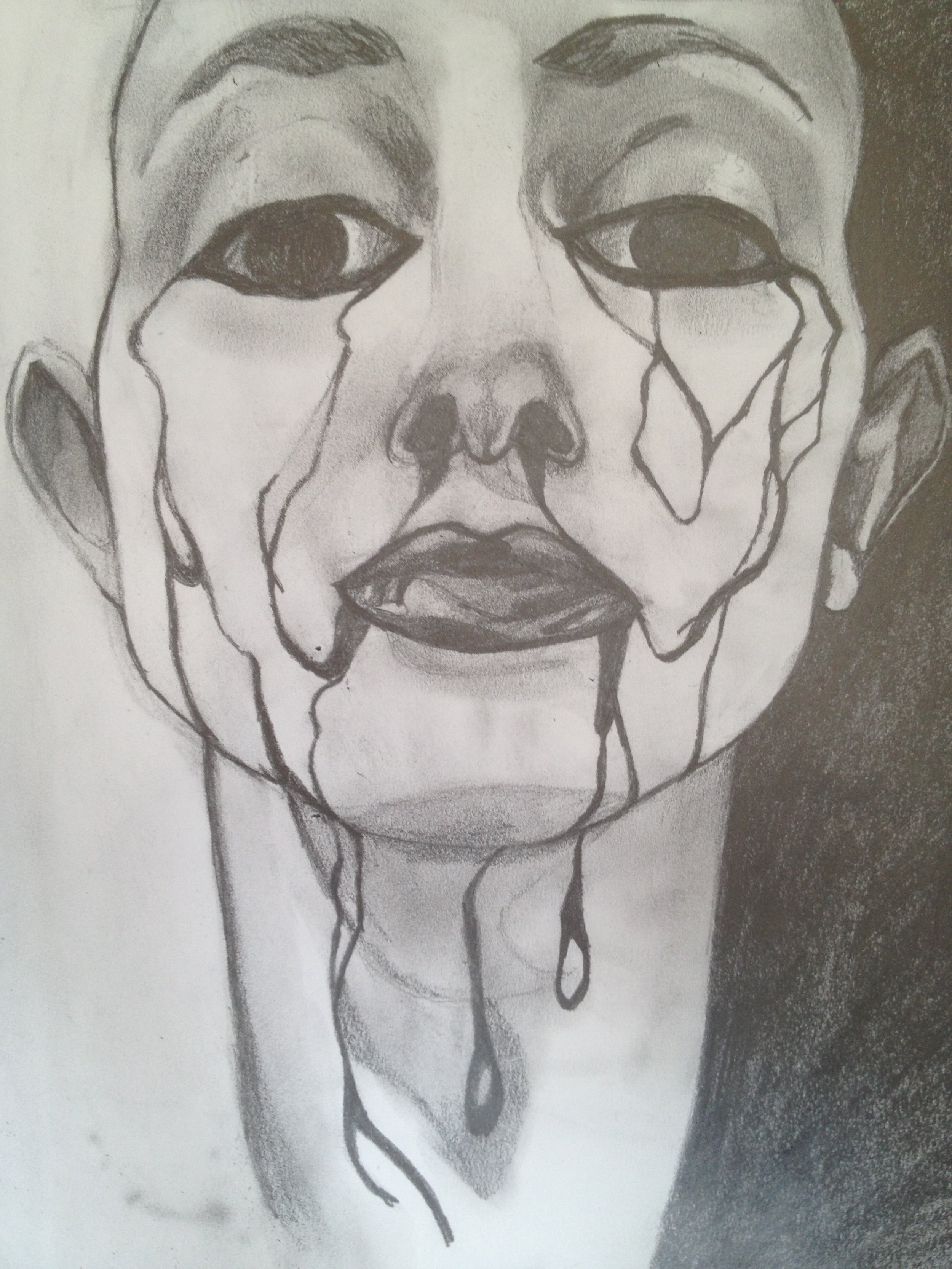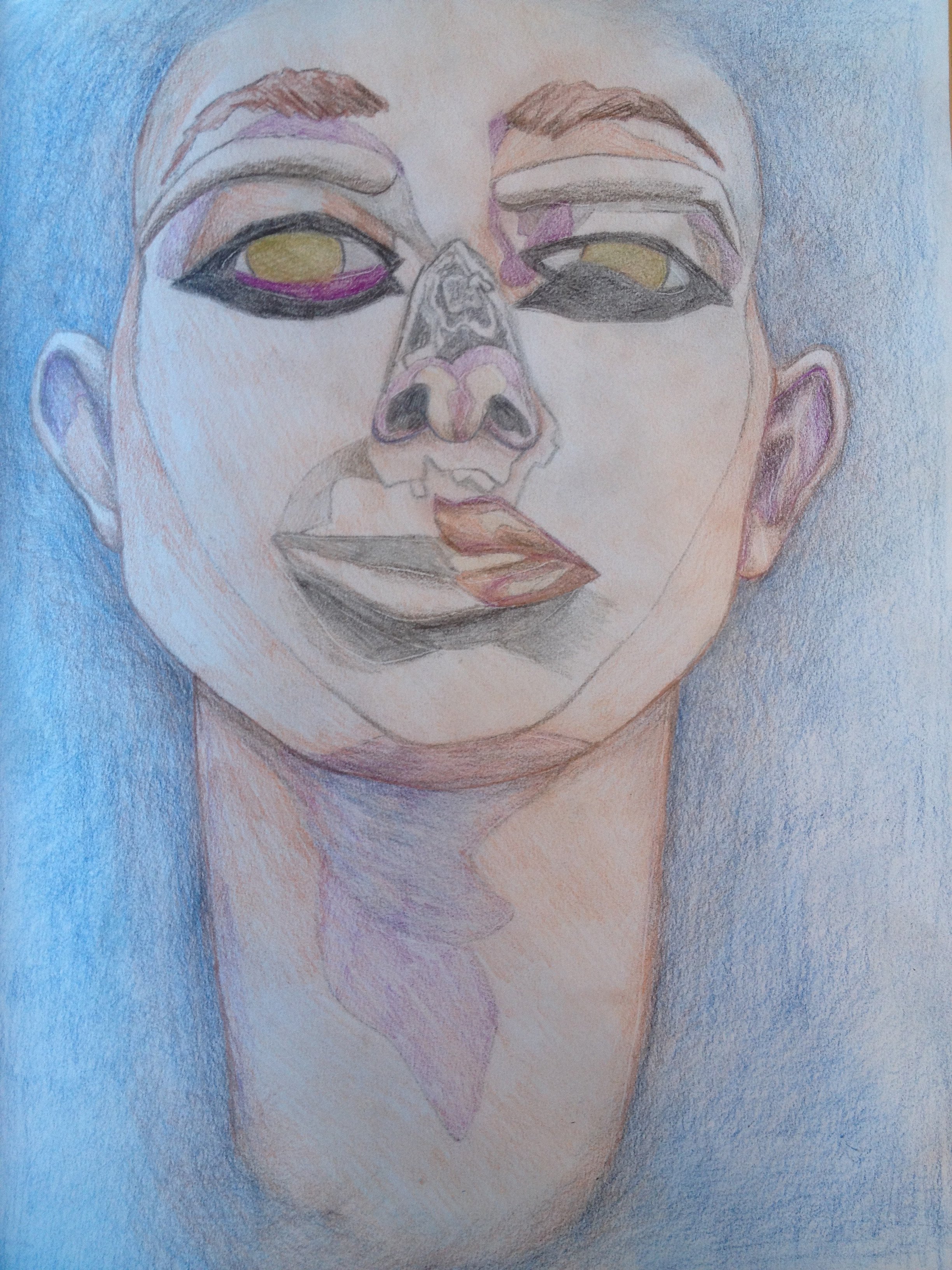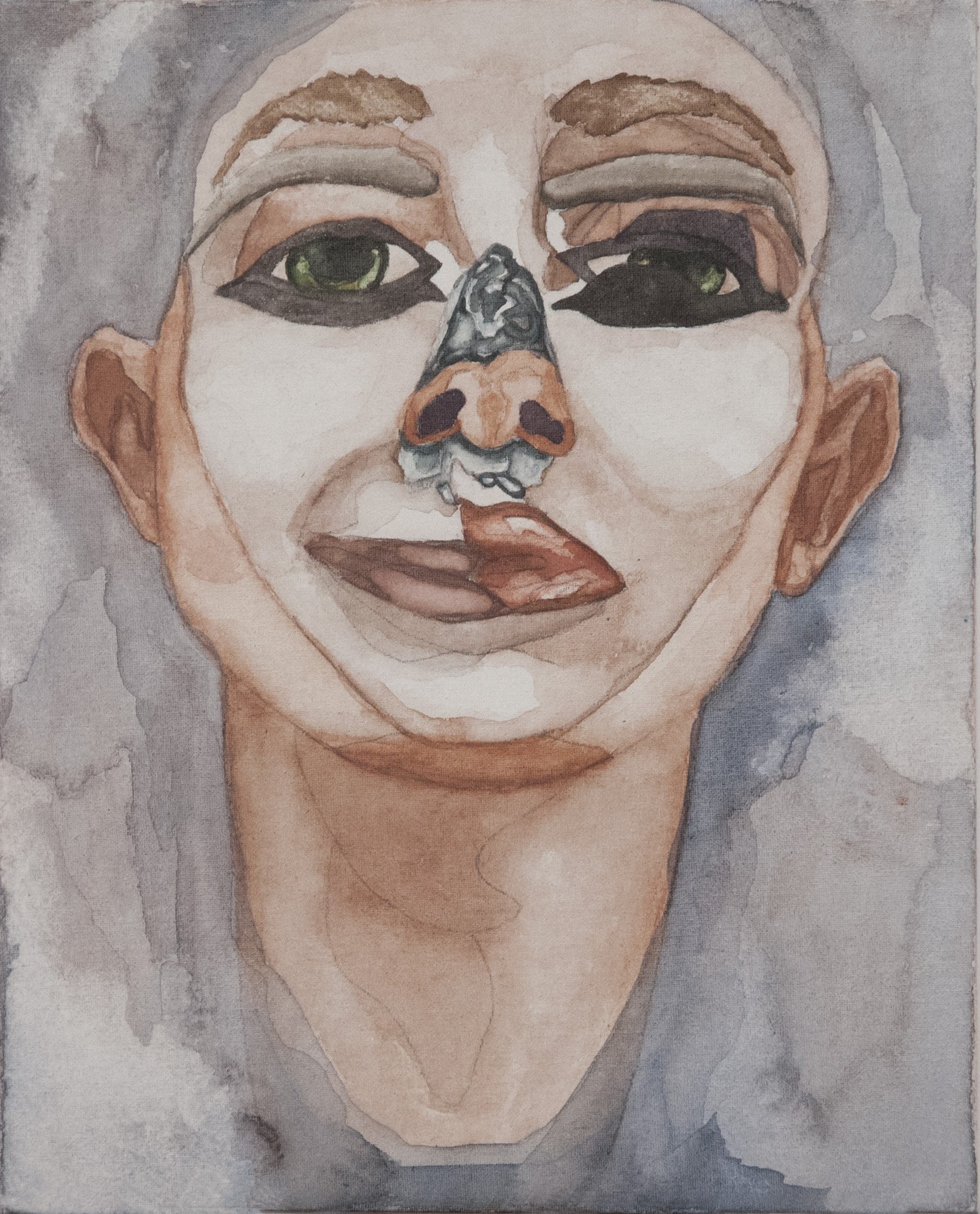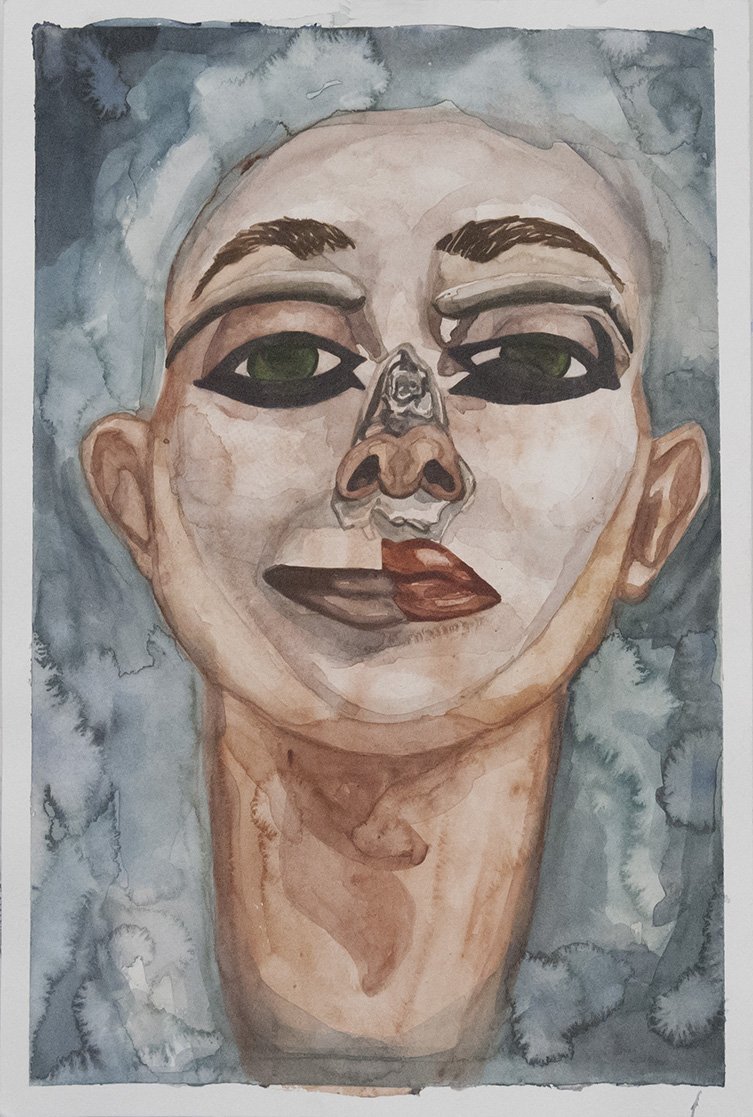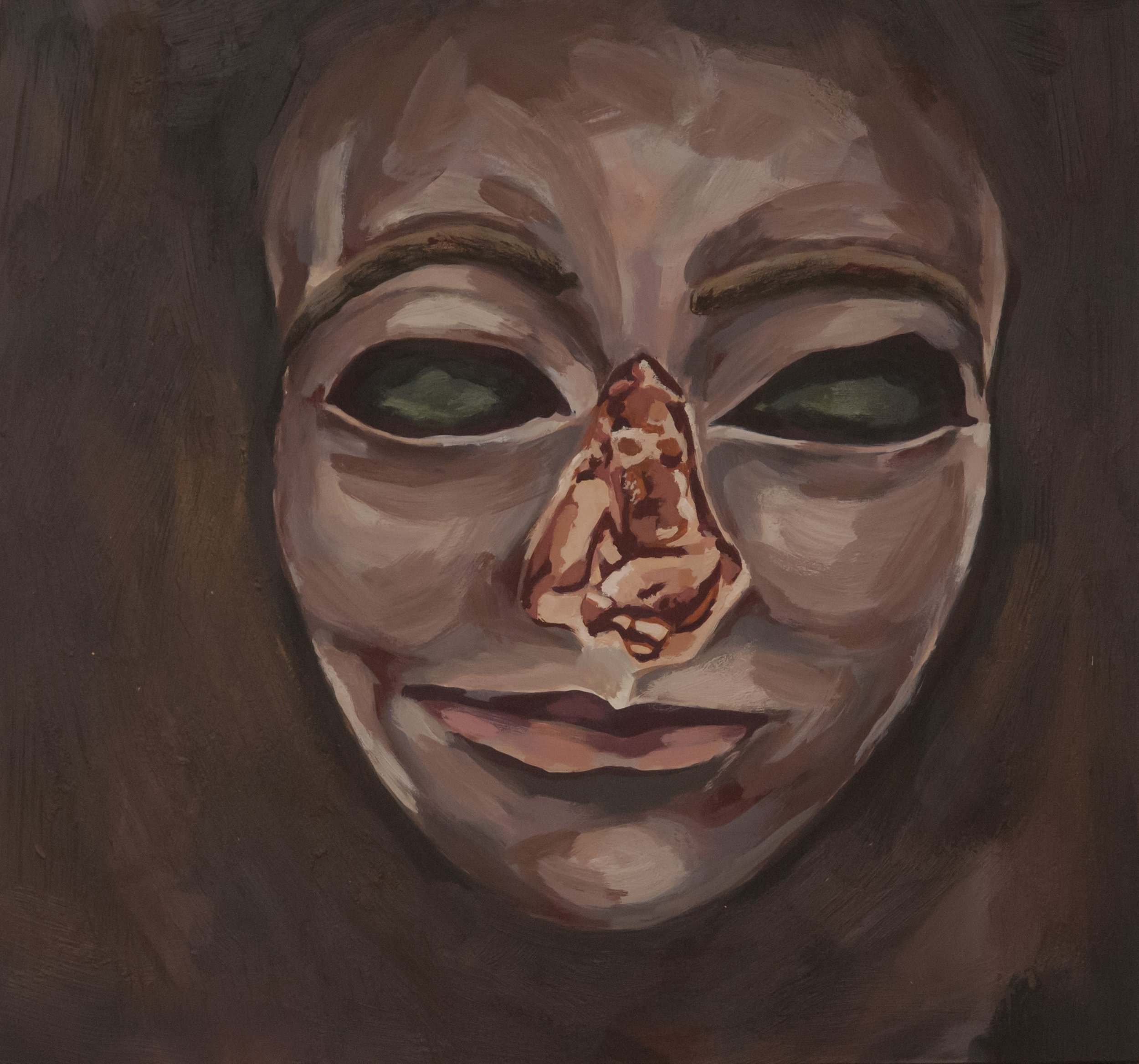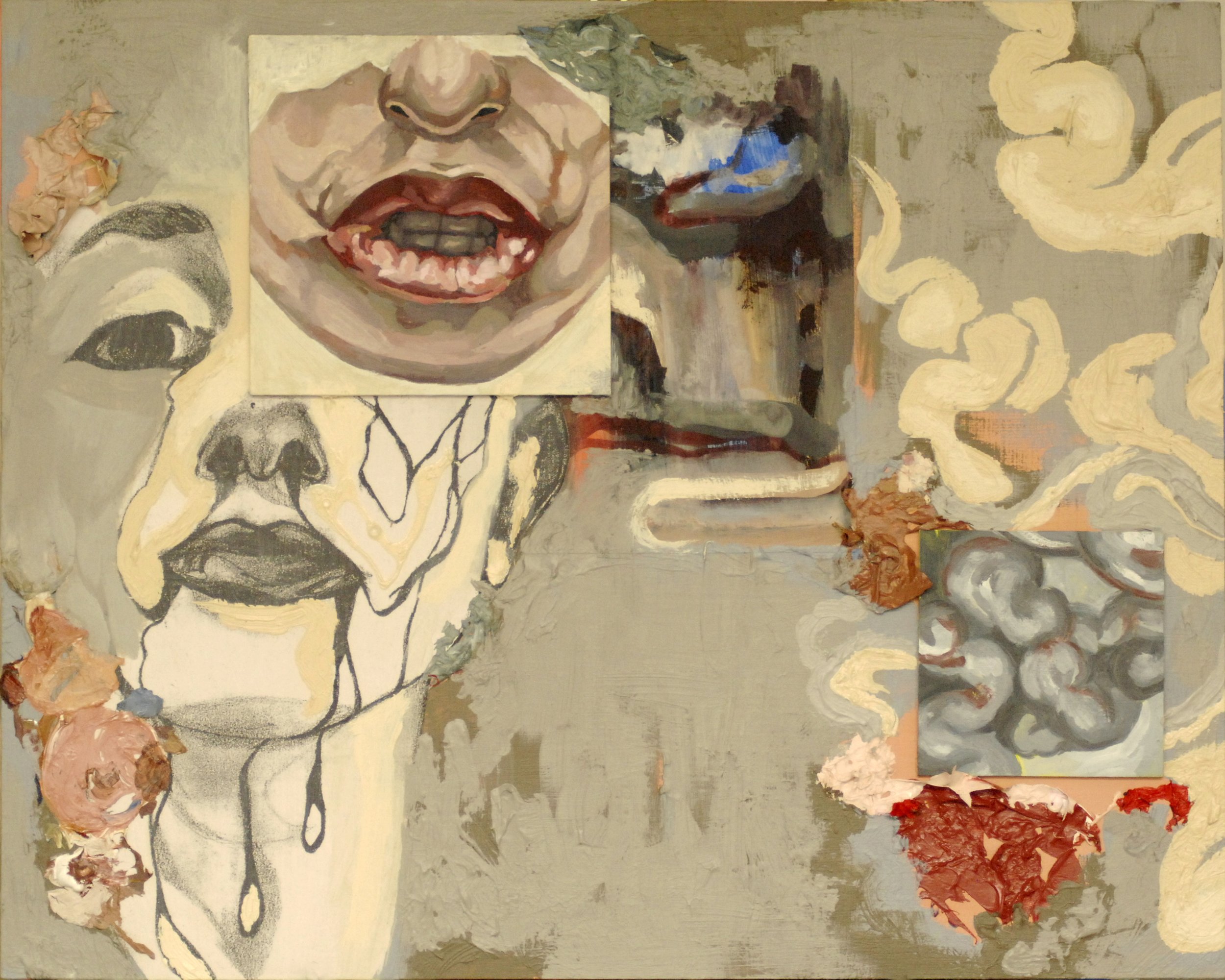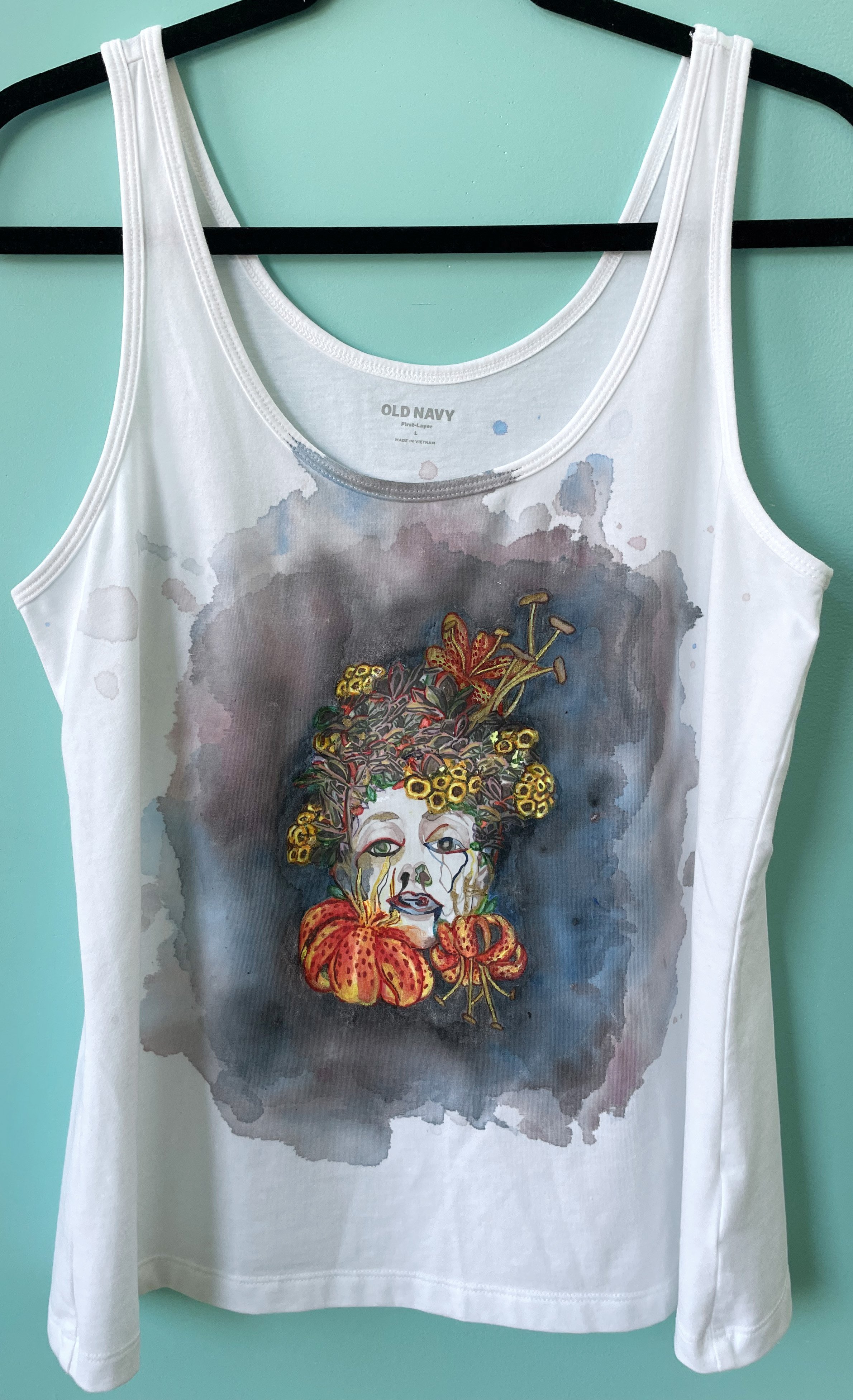Ophelia is a symbol of the historical repercussions for women who unmask in male-dominated western society. I started this series in 2014, making drawings and paintings inspired by the tragic heroine, over a decade after first being introduced to Shakespeare’s Hamlet. While I was much too young then to understand the depth of its messages, I eventually started–and never stopped–discovering insights woven into the exquisite story.
The series was born in my first apartment after having made the vast leap of moving to Brooklyn. As a budding freelance makeup artist, I was plunging headfirst into the stormy sea that is NYC’s fashion and beauty industry. Ophelia was one of my first in-depth explorations of incorporating my makeup world into my paintings. The trio of India Ink and watercolor paintings reference a photo I had taken of myself after adorning myself with an avant-garde design in black makeup. This image, along with the snapshot of an ancient mask at the Brooklyn Museum merged to form the visual groundwork for my Ophelias.
I didn’t have her in mind when I started. The idea for the title grew naturally from the combination of personally meaningful elements: the self-portrait, the symbolic relationship between makeup and masks, and the watery qualities of the medium and composition. Long before I would come to identify as non-binary, I was grappling with sorrow and outrage at women’s vast disadvantage in much of the world’s gender binary.
Four centuries ago, Shakespeare described what feels like the inevitable plight of a young woman in a community burdened by faces and postures that mask inner worlds. Characters deceive, manipulate, use and abuse each other. Men feel naturally entitled to control and dominate Ophelia; they accuse her of being connected to and responsible for the actions and supposed “sins” of every other woman. More relevant now than ever is the burden placed on the "gentler sex" by political and social expectations and obligations. The mask represents female subservience, performance, backbreaking attendance to appearance, and suppression of authentic authentic expression and emotion.
Shockingly ahead of its time, Hamlet highlights the harsh repercussions when a woman unmasks in an act of resistance to male dominance. She liberates herself by speaking her truth, behaving disobediently, and displaying strong emotion. Her actions evoke such values as commitment to individuality and creative expression. She rejects the pressures placed on her appearance and ladylike manner. The utter alienation and indignities she experiences as a result cause her such intense trauma that she reacts with a kind of psychosis, finally drowning herself out of complete despair.
Shakespeare lends breathtaking eloquence to a situation I relate to so strongly on so many levels, and I can’t imagine ever running out of the creative fuel it imbues in me.
